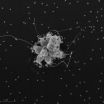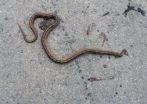(Press-News.org) Can social media postings by consumers be a source of useful information about vehicle safety and performance defects for automobile manufacturers?
Yes, say researchers at Virginia Tech's Pamplin College of Business, who conducted what is believed to be the first large-scale case study confirming the value of social media for vehicle quality management. The researchers developed a computer-based information system that provides auto manufacturers an efficient way to discover and classify vehicle defects.
"A lot of useful but hidden data on vehicle quality is embedded in social media that is largely untapped by auto manufacturers," said Alan Abrahams, an assistant professor of
business information technology, who led the study together with Weiguo Fan, a professor of
accounting and information systems.
Abrahams said consumers rely heavily on the Internet for information about automobile safety and reliability, looking up vehicle consumer surveys, insurance industry statistics, manufacturer websites, and complaints filed with regulatory agencies.
But in addition to being consumers of safety and reliability information, he said, automobile users are also producers of such information, using traditional Internet media (such as emails or online forms) and, increasingly, social media tools (such as bulletin boards, blogs, and Twitter).
Whether in public discussion forums, social networks, product reviews, visitor comments, wikis, or user-written news articles, user-contributed content is characterized by variable quality, said Fan.
It is, however, a daunting challenge for firms to process the "unstructured and dynamic" content of social media in order to detect the useful nuggets on vehicle defects that are buried among millions of unrelated or immaterial posts. So Abrahams and Fan sought to understand and prioritize the vast volume of consumer-produced automotive information and to ferret out and analyze the safety and performance issues.
Analyzing online discussion forums for owners of Honda, Toyota, and Chevrolet vehicles, the researchers developed and tested a decision support system that can be used to discover vehicle defects from social media posts across multiple automotive brands. A decision support system is a computer-based information system that helps managers make decisions.
"Vehicle quality management professionals would greatly benefit in terms of productivity by employing a vehicle defect discovery system like ours to sift defects from unrelated posts," Abrahams said.
### The study is online and will appear in a future edition of the Decision Support Systems journal.
Mining social media to discover vehicle defects
Virginia Tech researchers evaluate system to use social media to find vehicle defects
2012-10-24
ELSE PRESS RELEASES FROM THIS DATE:
Did bacteria spark evolution of multicellular life?
2012-10-24
Bacteria have a bad rap as agents of disease, but scientists are increasingly discovering their many benefits, such as maintaining a healthy gut.
A new study now suggests that bacteria may also have helped kick off one of the key events in evolution: the leap from one-celled organisms to many-celled organisms, a development that eventually led to all animals, including humans.
Published this month in the inaugural edition of the new online journal eLife, the study by University of California, Berkeley, and Harvard Medical School scientists involves choanoflagellates ...
JCI early table of contents for Oct. 24, 2012
2012-10-24
The missing "lnc" in human disease
LncRNAs (pronounced "link") are long non-coding RNAs that are emerging as important regulators of gene expression in biological processes and diseases. In this issue of the Journal of Clinical Investigation, two papers connect lncRNAs to inherited conditions in humans. Sylvia Bähring and colleagues at the Experimental and Clinical Research Center in Berlin found a chromosomal translocation that disrupts the expression of a lncRNA. This disruption alters the expression of the genes PTHLH and SOX9 and results in brachydactyly, an inherited ...
The missing 'lnc' in human disease
2012-10-24
LncRNAs (pronounced "link") are long non-coding RNAs that are emerging as important regulators of gene expression in biological processes and diseases. In this issue of the Journal of Clinical Investigation, two papers connect lncRNAs to inherited conditions in humans. Sylvia Bähring and colleagues at the Experimental and Clinical Research Center in Berlin found a chromosomal translocation that disrupts the expression of a lncRNA. This disruption alters the expression of the genes PTHLH and SOX9 and results in brachydactyly, an inherited malformation of the fingers and ...
Reaching the point of no return: Early intervention in a mouse model of obesity
2012-10-24
Obesity is a chronic metabolic disorder that affects half a billion people worldwide. Managing obesity is difficult, as many patients rebound to their pre-treatment weight. There is a hypothesis that chronic weight gain causes the body to adopt a state that supports excess weight. In a study published in the Journal of Clinical Investigation, researchers led by Malcolm Low at the University of Michigan challenged this hypothesis by developing a mouse model of obesity where the proopiomelanocortin (Pomc) gene in the hypothalamus can be turned on and off. With Pomc turned ...
84 million stars and counting
2012-10-24
Using a whopping nine-gigapixel image from the VISTA infrared survey telescope at ESO's Paranal Observatory, an international team of astronomers has created a catalogue of more than 84 million stars in the central parts of the Milky Way. This gigantic dataset contains more than ten times more stars than previous studies and is a major step forward for the understanding of our home galaxy. The image gives viewers an incredible, zoomable view of the central part of our galaxy. It is so large that, if printed with the resolution of a typical book, it would be 9 metres long ...
A 84-million star color-magnitude diagram of the Milky Way bulge
2012-10-24
Astronomy & Astrophysics published the first analysis of a catalog of 84 million individual stars in the Milky Way bulge as a part of the VVV ESO public survey. This gigantic data set allows building the largest, deepest, and most accurate color-magnitude diagram ever produced, containing more than ten times more stars than any previous study.
The bulge of the Milky Way is a large central concentration of ancient stars that is predominantly observed from the southern hemisphere. Understanding the formation and evolution of the bulge is fundamental for deciphering the ...
Herbal and dietary supplements can adversely affect prescribed drugs says extensive review
2012-10-24
A number of herbs and dietary supplements (HDS) can cause potentially harmful drug interactions, particularly among people receiving medication for problems with their central nervous or cardiovascular systems.
Those are the key findings of an extensive research review published in the November issue of IJCP, the International Journal of Clinical Practice.
Researchers examined 54 review articles and 31 original studies. They found that the greatest problems were caused by interactions between prescribed drugs and HDS that included ingredients such as St John's Wort, ...
Mouse model exposes a new type of T cell to target melanoma
2012-10-24
October 24, 2012, New York, NY – Cancers arise in the body all the time. Most are nipped in the bud by the immune response, not least by its T cells, which detect telltale molecular markers—or antigens—on cancer cells and destroy them before they grow into tumors. Cancer cells, for their part, evolve constantly to evade such assassination. Those that succeed become full-blown malignancies. Yet, given the right sort of help, the immune system can destroy even these entrenched tumors.
In the October 22nd issue of the Journal of Experimental Medicine, researchers led by ...
A new take on the Midas touch -- changing the color of gold
2012-10-24
Red gold, green gold – a ground-breaking initiative has found a way of changing the colour of the world's most iconic precious metal.
A University of Southampton team have discovered that by embossing tiny raised or indented patterns onto the metal's surface they can change the way it absorbs and reflects light – ensuring our eyes don't see it as 'golden' in colour at all.
The finding results from a major initiative funded by the Engineering and Physical Sciences Research Council (EPSRC) targeting the development of a new generation of nanotechnology-enabled materials. ...
The majority of roadkill amongst vertebrates in Catalonia are in protected areas
2012-10-24
Amphibians are the vertebrate group that is more likely to become roadkill in Catalonia, even more so than reptiles, mammals and birds. This is the case according to an international team of scientists who have concluded that highly protected areas are home to more cases of animal death on the roads.
Our network of roads is considered one of the main threats to fauna survival. Researchers at the universities of Barcelona (UB), Porto (Portugal) and Uppsala (Sweden) have studied the number of vertebrate deaths on 820 kilometres of road in North Eastern area of Spain and ...
LAST 30 PRESS RELEASES:
Making lighter work of calculating fluid and heat flow
Normalizing blood sugar can halve heart attack risk
Lowering blood sugar cuts heart attack risk in people with prediabetes
Study links genetic variants to risk of blinding eye disease in premature infants
Non-opioid ‘pain sponge’ therapy halts cartilage degeneration and relieves chronic pain
AI can pick up cultural values by mimicking how kids learn
China’s ecological redlines offer fast track to 30 x 30 global conservation goal
Invisible indoor threats: emerging household contaminants and their growing risks to human health
Adding antibody treatment to chemo boosts outcomes for children with rare cancer
Germline pathogenic variants among women without a history of breast cancer
Tanning beds triple melanoma risk, potentially causing broad DNA damage
Unique bond identified as key to viral infection speed
Indoor tanning makes youthful skin much older on a genetic level
Mouse model sheds new light on the causes and potential solutions to human GI problems linked to muscular dystrophy
The Journal of Nuclear Medicine ahead-of-print tip sheet: December 12, 2025
Smarter tools for peering into the microscopic world
Applications open for funding to conduct research in the Kinsey Institute archives
Global measure underestimates the severity of food insecurity
Child survivors of critical illness are missing out on timely follow up care
Risk-based vs annual breast cancer screening / the WISDOM randomized clinical trial
University of Toronto launches Electric Vehicle Innovation Ontario to accelerate advanced EV technologies and build Canada’s innovation advantage
Early relapse predicts poor outcomes in aggressive blood cancer
American College of Lifestyle Medicine applauds two CMS models aligned with lifestyle medicine practice and reimbursement
Clinical trial finds cannabis use not a barrier to quitting nicotine vaping
Supplemental nutrition assistance program policies and food insecurity
Switching immune cells to “night mode” could limit damage after a heart attack, study suggests
URI-based Global RIghts Project report spotlights continued troubling trends in worldwide inhumane treatment
Neutrophils are less aggressive at night, explaining why nighttime heart attacks cause less damage than daytime events
Menopausal hormone therapy may not pose breast cancer risk for women with BRCA mutations
Mobile health tool may improve quality of life for adolescent and young adult breast cancer survivors
[Press-News.org] Mining social media to discover vehicle defectsVirginia Tech researchers evaluate system to use social media to find vehicle defects


